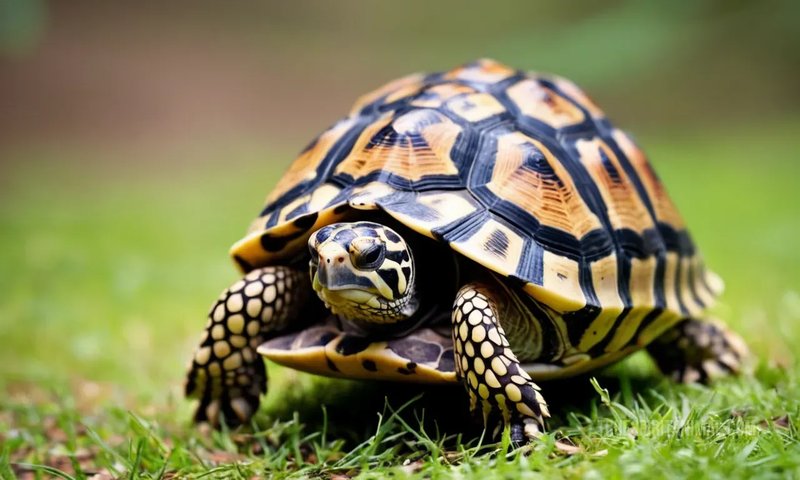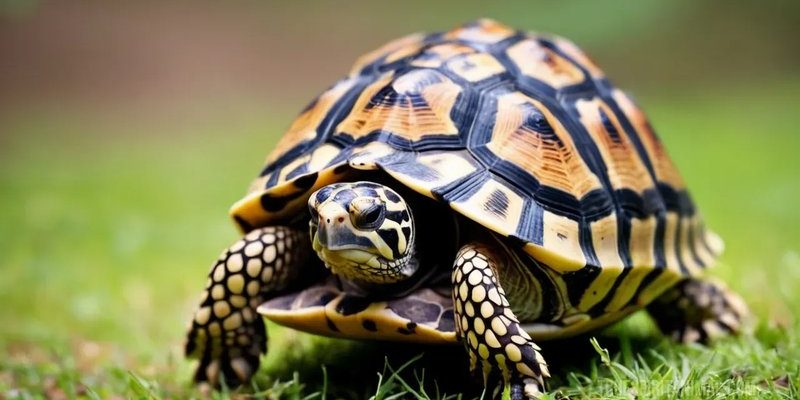
Let me take you through these common misunderstandings and shed some light on what’s fact, what’s fiction, and why it matters. Think of this like chatting over coffee—one minute we’re talking about adorable pets, and the next, we’re diving deep into the real story of the Indian Star Tortoise.
Myth 1: All Tortoises Are Slow Movers
Here’s the thing: not all tortoises are the sluggish, leisurely walkers you might imagine. While it’s true that the Indian Star Tortoise enjoys a relaxed pace, *they can be surprisingly quick when they want to be*. In the wild, this agility can help them escape predators or get to food quickly. You might find yourself surprised by how fast a tortoise can move when the motivation is right!
In fact, while they’re not racing against cheetahs, they can scuttle along with a surprising burst of energy. Think of them like your slow friend at the buffet who suddenly zooms for dessert when the cake comes out. The Indian Star Tortoise can be curious and lively, especially when you offer them something tasty.
Why Does Speed Matter?
Understanding the activity level of the Indian Star Tortoise can help you create a better environment for them. If you’re considering getting one as a pet, remember that they do need space to roam and explore. A small enclosure can lead to stress and health issues. So, while they may seem leisurely, they thrive in an engaging and stimulating space.
Myth 2: They Make Good Pets for Beginners
Many people think that because they’re cute and not as high-maintenance as some pets, Indian Star Tortoises are perfect for beginners. Honestly, this couldn’t be further from the truth. While they aren’t as demanding as dogs, they *still require specific care* that a novice might overlook.
For one, their diets are more complex than most people realize. Unlike your average pet, they need a mix of greens, flowers, and occasional fruits, along with constant access to calcium and UV lighting to keep their shells healthy. Neglecting their dietary needs can lead to serious health issues, like metabolic bone disease.
Things to Consider Before Getting One
Before bringing home an Indian Star Tortoise, consider these points:
- Housing: They need a spacious, escape-proof enclosure that mimics their natural habitat.
- Diet: A proper balance of food is crucial for their well-being.
- Temperature: They require a specific range of temperatures to thrive.
If you’re ready to dive into the world of tortoise care, then go ahead! But if you prefer a pet you can cuddle on the couch, this might not be the best choice.
Myth 3: They Are Suitable for Children
Another popular misconception is that Indian Star Tortoises are perfect pets for children. While they are indeed fascinating creatures, they may not be the best companions for little hands. Kids might want to handle them frequently, which can lead to stress for the tortoise. Remember, they’re not toys; they’re living beings with feelings and needs.
Additionally, if a tortoise is dropped or handled too roughly, it can result in injury. So, you might want to consider age appropriateness and supervision when kids are interacting with these little guys.
Choosing the Right Pet for Kids
If your child is eager for a pet, consider smaller animals that are known for being more durable, like hamsters or fish. However, if you choose to introduce an Indian Star Tortoise into your family, it’s essential to teach children how to handle them gently and respectfully. Making it a learning experience can be rewarding for both the child and the tortoise.
Myth 4: They Can Live in Small Spaces
You might be surprised to learn that one of the biggest misconceptions about Indian Star Tortoises is their need for space. Some people think they can thrive in tiny enclosures. Let me explain why that’s a real no-no.
In the wild, these tortoises roam over large areas, foraging for food and exploring their surroundings. Keeping them in cramped spaces can lead to stress, unhealthy behaviors, and even shell deformities. The more room they have to roam, the healthier and happier they will be.
What Does a Proper Habitat Look Like?
If you’re considering adopting an Indian Star Tortoise, here are a few tips for creating the right habitat:
- Size: Aim for at least a 4×2-foot enclosure, with the option to expand as they grow.
- Substrate: Use coconut coir or soil for digging and burrowing.
- Humidity and Heat: Maintain proper humidity levels and provide a basking area with a heat lamp.
A little effort in setting up their habitat goes a long way in ensuring your tortoise lives a long, healthy life.
Myth 5: They Don’t Need Vet Care
It’s easy to assume that reptiles like the Indian Star Tortoise don’t need regular vet visits, but this is yet another misconception. Just like any pet, they can face health issues that need professional attention. Many owners forget that tortoises need regular check-ups to monitor their health and prevent potential problems.
You might think, “But they’re so hardy!” True, they are resilient creatures, but that doesn’t mean they’re invincible. Regular vet visits can help catch any health issues early, ensuring your tortoise stays in tip-top shape.
Finding a Vet for Your Tortoise
When searching for a vet, look for someone with experience in reptile care. They understand the unique needs of tortoises and can provide advice on diet, habitat, and common health concerns. It’s an investment in your tortoise’s health that will pay off in the long run.
So there you have it! The Indian Star Tortoise is a fascinating creature, but they come with their own unique set of needs and challenges. By busting these common myths, we can better appreciate them and make informed decisions if we decide to welcome one into our lives.
Whether you’re exploring the idea of adopting one or simply admiring them from afar, understanding the reality behind these tortoises helps ensure they are cared for properly. If you’ve got your heart set on an Indian Star Tortoise, remember it’s not just about having a pet; it’s about committing to be a responsible caregiver. They may be slow, but they deserve a fast track to a happy and healthy life!

